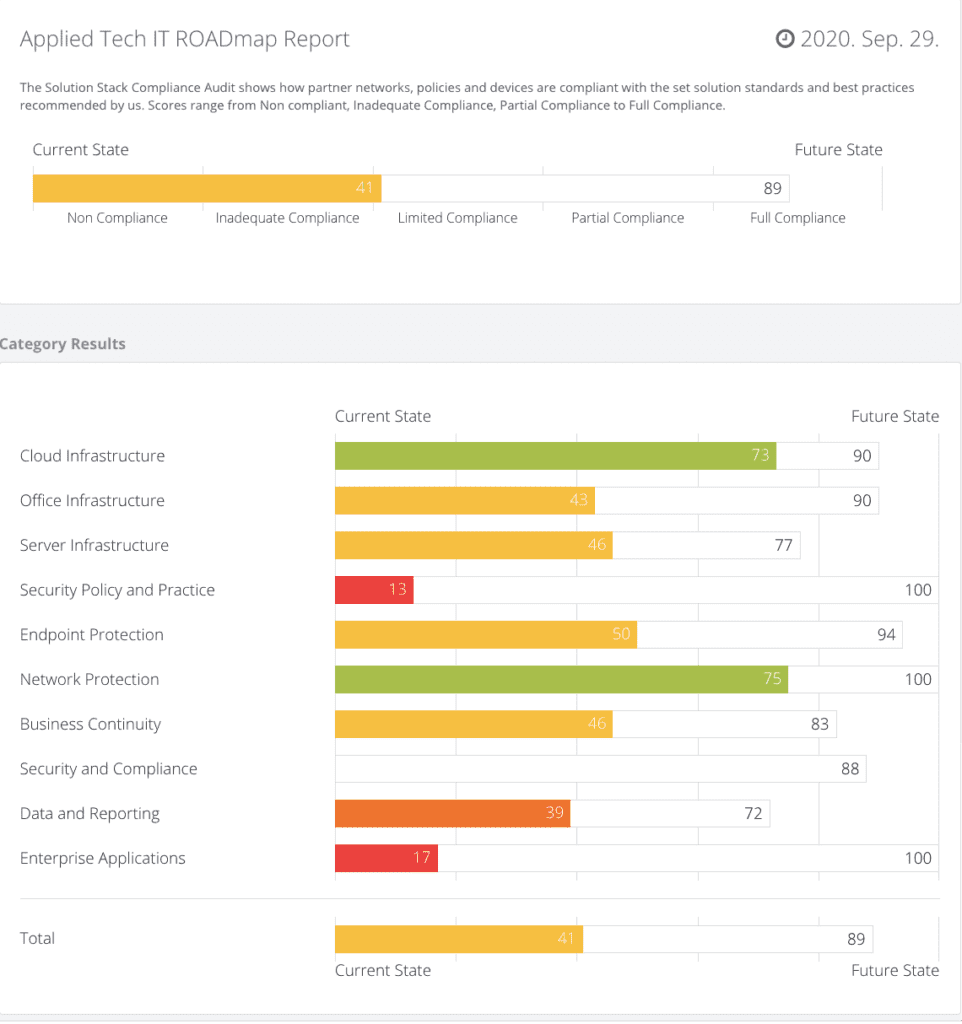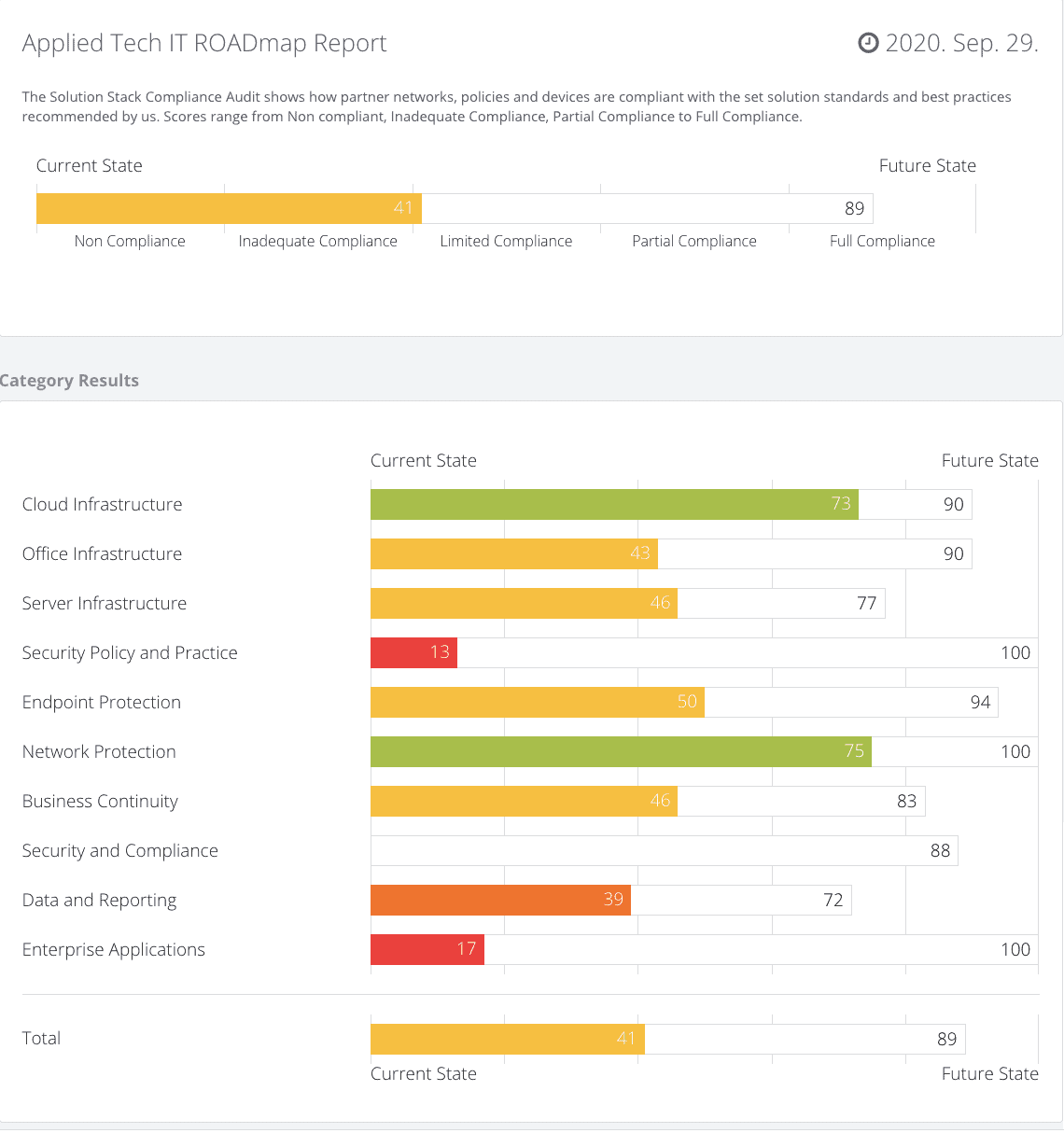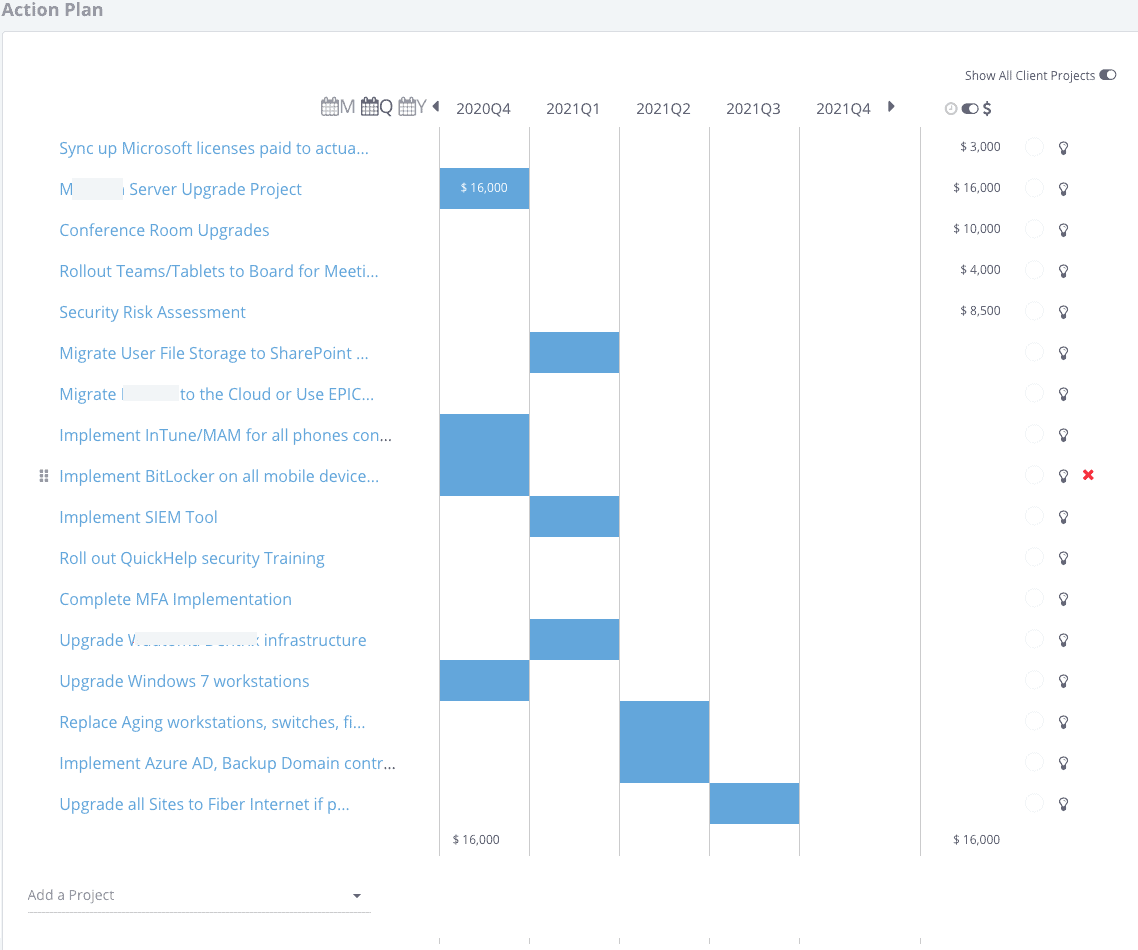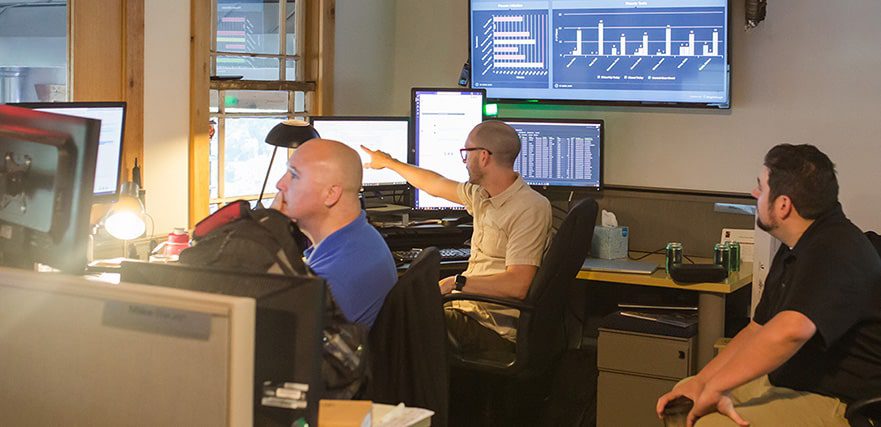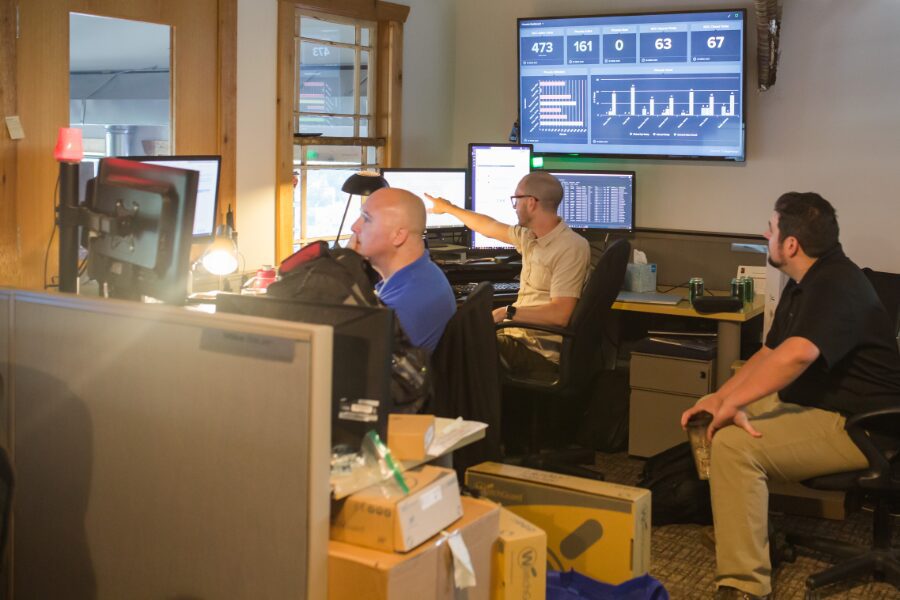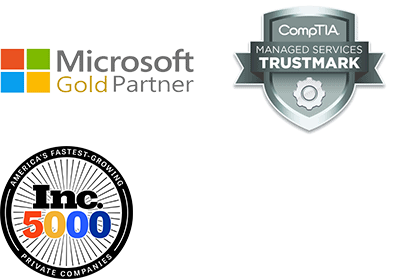Developing a 2021 IT budget for the year after COVID will be one of the most important planning cycles of the past decade. 2020 was a turning point for companies. The rapid spread of COVID-19 forced the lockdown of much of our economy forcing businesses to send their employees to work from home, or worse, lay them off.
For many companies, this event exposed among other things, a significant technology deficit caused by years of underinvestment. IT personnel or their external partners scrambled to handle the initial migration of employees to work from home (WFH). They now confront overcoming years of sidelining their technology infrastructure to other priorities.
The digital imperatives ahead may have been competitive advantages in the past. In the current environment, they more likely represent a base foundation for future success.
2020 IT Budgets and the transition to WFH
When 2020 began, the economy was performing well, and the general outlook was optimistic. According to Spiceworks, 44% of companies planned on increasing their IT budgets for the year across a range of initiatives.
That all changed in late February and March when federal officials began discussing the potential impact of a Coronavirus epidemic. The warning to companies was to “dust off” their business continuation plans and understand their level of preparedness for this eventuality.
A few weeks later, most of the country went into lockdown. Businesses either shut down for a period of time or operated in a limited capacity as they scrambled to move their workforces to a remote setting.
As a managed IT service provider, we at Applied Tech had to transition our company and over 100 customers with 7,000 employees to a remote environment in the span of a few weeks. While at times hectic, we were successful in helping our customers make this move.
What we learned was this sudden migration of the workforce immediately created enormous challenges, such as:
– Can employees easily transport and install their equipment at home?
– Do they have access to reliable internet?
– Can they connect to the corporate network?
– Does the corporate network allow for a friction-less user experience?
– Do they operate in a cybersecure environment?
– Are their employees trained on the increased risk of scammers and phishing emails?
– Do they have the software tools to do their work?
– Do they have tools to communicate with their colleagues and customers?
– More importantly, do they know how to effectively use those tools?
Not surprisingly, prepared companies experienced much less disruption than those which were not. More often than not, those experiencing more disruption had been significantly underinvesting in their technology.
How COVID-19 affected IT spending in 2020
CIT Group, along with The Harris Poll, recently conducted a survey of small and middle market businesses to understand how these companies coped with the pandemic and how it affected their 2020 IT budgets.
One of the biggest changes before and after the initial pandemic shock have been attitudes by small and mid-sized businesses regarding the need for continuous technology investment. The CIT/Harris Poll points out that both groups now recognize “the resiliency and flexibility that technology can deliver… has been proven convincingly by the COVID-19 outbreak.”
Most executives wished they had invested more in technology the prior 12 months and believed it would have helped their companies fare better during the pandemic. This particular survey indicated 84% were planning to invest more in the upcoming 12 months.
This latter statistic also coincides with a Forrester study which categorized companies into 3 modes – survival, adaptive and growth. Those in survival mode are the ones cutting expenses in IT (and other areas) just to hang on until there is some form of relief and recovery.
When COVID first struck, many companies suspended their investment projects to preserve cash and assess their future. At the same time, they were spending reallocated or unbudgeted funds just to accommodate the relocation of their workforce and keep their business fully operational.
As the economy gradually opened back up, projects resumed with more of a focus on meeting the immediate needs of the business – i.e., making it easier to work remotely. This has translated into accelerating infrastructure investments toward cloud computing and enhanced cybersecurity. This aligns with what we are experiencing with our customers.
The CIT survey also noted that the majority of executives said their companies plan to allow employees to work remotely on a permanent basis after the pandemic subsides. These companies see it as a competitive advantage that will help them grow in the future and will be one business imperative driving IT priorities for 2021.
Establish your 2021 IT budget priorities
If you haven’t yet done so, now is the time to establish your top IT goals for 2021 while the experience of the last number of months is still fresh in your mind.
Establishing or revising your technology roadmap to reflect your new business priorities is the place to start. Every business has somewhat different needs based on their size, industry, regulatory requirements and current technology base. Yet, everyone has a limited budget. Let the roadmap drive the decisions that will provide the most value to the company.
Here’s an example of the approach we use with our customers to prioritize their technology investments, thereby aligning with their strategic business objectives. You can see there are 10 dimensions we analyze to indicate where they are today compared to their targeted future state.
Once this initial assessment is in place, we create an action plan together with our customer. We recommend specific initiatives designed to improve one or more of those dimensions, allocate a budget to each and create a timeline that both recognizes the priority to the business and the budget constraints of our customer.
The roadmap approach should reduce the temptation to spend IT dollars on the “shiny new objects” in technology or upgrades just because they are available. Some technologies may be ready for retirement. The roadmap provides a solid foundation upon which to build an IT budget that supports your business goals and drivers which will deliver the greatest return with the available resources.
What’s in an IT budget?
If you’ve never created an IT budget, it can be fairly simple. Simple, but not necessarily easy. The basic cost components of a plan include ongoing costs like staffing, hardware/infrastructure and software, while then adding in your project initiatives.
Here’s an outline you can use as a guide:
Ongoing Costs
Staffing
Recruiting – cost to acquire staffing resources
Internal – salaries and benefits for in-house resources, add allocations for non-dedicated resources if appropriate
External resources – contractors, managed service providers
Training – costs for ongoing training and certifications of internal IT staff, costs for ongoing training of other staff on use of IT resources (e.g., O365 training)
Hardware & Infrastructure
Servers – cost of hardware, including delivery, installation and sales taxes
User devices – desktop and mobile including delivery, setup and sales taxes
Supplies – non-capital items, such as cabling, dongles, keyboards, etc.
Support contracts – generally costs to keep equipment under warranty
Software
Licenses – one-time or non-recurring costs to use a product or service
Subscriptions – recurring (monthly or annual) costs to use a software application (i.e., Software-as-a-Service)
Support & maintenance contracts – cost to receive periodic upgrades, training or other general support on use of a software product
Project Costs
Project #1, 2, 3, etc. (create a budget for each as outlined in the Action Plan shown earlier)
Consulting fees – cost of an outside provider to advise or implement a project
Hardware – the cost of new servers, user devices, etc.
Software – implementation and ongoing costs of new or upgraded software
Cost allocations – include internal staffing and administrative costs, if applicable to the project or a factor in calculating a return on investment
Contingencies
Unexpected costs – identify potential areas or situations where the unexpected may occur and hold back a portion of your budget so you have the flexibility to respond
One note to highlight is that the categories above include both operating expenses and capital expenditures. For example, hardware servers and user desktops would likely be capital expenditures. They may be deducted 100% as an expense for tax purposes in the current year. Most companies, however, amortize the full cost of those capital items evenly over 3-5 years and reflect that cost as the expense for financial reporting.
Many digital transformation initiatives are changing the accounting methodologies for IT costs in companies. Capital expenditures requiring large capital outlays in hardware like servers are giving way to monthly fees based on actual usage or number of user seats needed. This transition from capital expenditures to operating expenses both conserves cash and allows more control over monthly costs.
What should a 2021 IT budget process look like?
Processes can vary but this is a common approach.
Review your current IT expenses
Accumulate last year’s and current or projected expenses into category buckets as outlined above to create a baseline.
Estimate the quantifiable return
What kind of time savings, productivity gains or new leads did these expenses or investments create for the business?
Create a 2021 baseline expense budget
Estimate future costs for needed hardware replacement, employee headcounts, scheduled price increases, etc. based on what you know or can forecast today.
Review your baseline for savings opportunities
Manage your vendor relationships to consolidate applications that serve the same function (e.g., replace Slack, Zoom and GoToMeeting with Microsoft Teams), negotiate lower costs and/or added value with vendors on upcoming contract renewals, compare outsourcing vs. in-sourcing IT talent as a few areas to explore. Vendor management is a significant and often untapped opportunity we find going into many of our new client relationships. Savings you identify here can justify funding for new projects.
Address key drivers of your business
Plan projects to improve internal processes, enhance internal collaboration, bring your cybersecurity into regulatory compliance (e.g., HIPAA, NIST/CMMC, PCI) and generate more revenue. Get rough budget estimates from your vendor partners.
Make a business case for your projects
Estimate the savings, cost avoidance, labor efficiencies or increased revenue created by the projects against the investment to determine a payback period or internal rate of return (IRR). This helps budget decision-makers determine which projects to prioritize. Tie improvements back to targeted line item expenses.
Bring others into the process
Don’t plan in a silo. Go talk to your peers in Finance, HR, Operations or Marketing. Ask for input on what are their most important needs from IT, or what may be less important. Explore areas for opportunities to combine budgets to support worthwhile initiatives. An example might be IT working with HR to combine budgets that train employees on how to better utilize new technologies. Bringing others into the process also builds early support for your budget.
Develop a measurement plan
Determine how you are going to track expenditures to stay within budget and show results to demonstrate value or return.
Plan for the unexpected
Budget a contingency fund for the uncertainty that 2021 will no doubt bring. This could be 5% or even 25% depending on your situation, but it should reflect what you may have spent this year when the pandemic struck. If those funds aren’t needed, you can unlock them for lower priority projects later in the year or to absorb budget cuts if 2021 business conditions deteriorate. The key is to be flexible.
Maximize potential tax breaks
As you head toward year-end 2020, work with your Finance team to identify tax breaks such as the IRS’ Section 179 deduction or other state and local incentives that may be available. Early tax breaks will likely further improve the returns on your IT investments. With ongoing worldwide supply chain uncertainties due to COVID-19, hardware delivery schedules may be unpredictable. Order as early as possible to get those tax breaks.
Use excess 2020 budget to start 2021 early
If you are fortunate enough to have unused budget dollars, start next year’s projects in Q4 of this year. You may even be able to negotiate a discount with external partners who have open capacity by starting or committing early.
Key considerations for 2021 IT budget planning post COVID-19
What we all have learned this past year should serve us all well as we plan our 2021 IT budgets. Long term objectives have been reprioritized, meaning some have been accelerated while others remain on hold or only given life-support funding.
Digital transformation
The massive migration of employees to work from home has accelerated the digital transformation efforts of most companies by moving their infrastructure and business applications to the cloud. What may have been an 18 to 30-month action plan has become a 6 to 12-month imperative.
A survey by one major ERP software provider highlighted how many companies are doubling down on digital transformation during the pandemic. The current economic and market anxiety seems to be bringing an increased urgency and commitment to technology investments post COVID-19.
User Experience
In the rush toward digital transformation, keep the user experience in mind at all times. Performing massive migrations of complex line-of-business applications to the cloud may make sense on paper. Yet, if employees or customers experience new or different frictions, productivity or revenue may suffer, slowing or offsetting the benefits you seek. Take time to carefully plan out large projects.
Business tools
If the long-term trend is a greater percentage of employees working remotely, make sure your employees have the appropriate business tools to be effective and productive. Minimize their tech footprint..laptops instead of desktops. Or better yet, go to virtual desktops that can be administered centrally and deployed quickly, obviating the need for more expensive hardware and setup. Make sure they have hi-fidelity headsets and the ability to easily connect to the corporate network.
Cybersecurity
The pandemic has led to an even more dramatic rise in cybersecurity attacks on organizations. Phishing and ransomware attacks are aimed at stressed and distracted employees who may be vulnerable to news about the pandemic or lured by a spoofed offer from a “trusted” brand. Companies need to include new additional layers of security, such as multi-factor authentication (MFA), as a part of their base protection of their network and corporate and customer data. The cost of a breach could be crippling or at worst, fatal.
Managing this risk is a challenge in its own right, while convincing leadership to invest sufficiently is another. Start by benchmarking cybersecurity spending relative to industry peers. Monetize cyber risks to get management’s attention rather than making qualitative statements about possible outcomes. And push risk management responsibility down through your supply chain.
Training
Businesses should ensure their employees are trained and ready to productively use new technologies to achieve desired benefits. New hires can be recruited with the requisite tech skills to be successful from the start. Yet, your current employees likely need robust resources to lift their skills.
The good news is you don’t necessarily need to tie up your help desk or other in-house resources. There are any number of learning management systems (LMS) with large video libraries or knowledge bases to fill that void. The incremental budget for training resources may be worth as much as the original investment itself in generating a return.
IT skillsets
With accelerated digital transformation agendas, organizations may not have the internal capacity or skillsets to implement crucial initiatives or even staff their help desks. Overall unemployment remains high. There is, however, a growing shortage of tech talent in the marketplace. This is creating upward salary pressure.
When you hire in-house talent, they may not possess the range of skills you need. And once they start, other companies may poach them elsewhere with a higher salary creating a sudden capacity and knowledge gap. Consider bringing in an external partner with a deep bench to supplement your team’s capacity and skillsets to maintain operational continuity.
Business Continuity Planning/Disaster Recovery
If businesses learned nothing else, they came to appreciate the need to have continuity and recovery plans in place. The current pandemic is ongoing, and others may be in our future. Cyberattacks may disable a company network or worse, shut down a power grid. Budget priorities should include addressing needs such as real time, redundant backups and offsite storage as well.
Contingencies
Most of us rarely plan for the unexpected. That’s why continuity planning and having a disaster recovery plan in place is so important. Okay, lesson learned. But you still need to anticipate the funding you’ll need to respond to those contingent situations.
That’s why we recommend setting aside a portion of your IT budget to accommodate those unexpected expenditures should they occur. The key here is to retain some flexibility. Continually revise your budget to recognize your current situation and the demands of the business. An agile approach will help you sleep better at night.
Download a copy of our full list of 2021 IT Budget Tips
Take charge of your 2021 IT budget planning process
The key lesson from this year’s pandemic ordeal is the need to reset your priorities to align with the critical strategic drivers of your business for this new world. Then, create an action plan recognizing the financial realities of your organization. Wise investments in IT may be the difference between surviving or thriving through the end of the current pandemic.
You and your IT team may be overly consumed with the daily chores of maintaining your IT functions. If so, consider bringing on a managed service provider (MSP) to offload some of that activity to free up your time to focus on the more critical areas of your business. A solid MSP partner should also provide strategic business and technical expertise to help you determine the areas your IT can better support the company’s needs with the investment you have available.
As Winston Churchill once famously said while working to form the United Nations after World War II, “Never let a good crisis go to waste.” We didn’t ask for a pandemic but here it is. View this as an opportunity to make 2020 an inflection point in your business. One where IT becomes a strategic advantage in 2021 and beyond.
